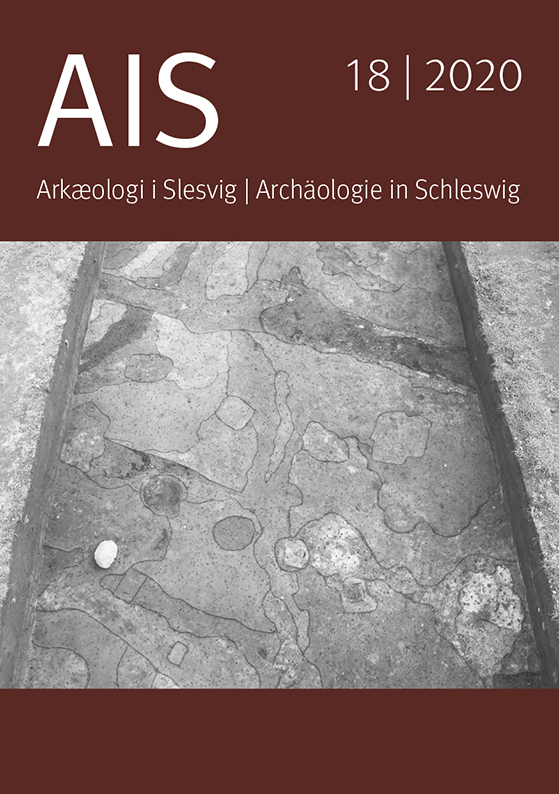Die nordfriesischen Inseln im 8. Jahrhundert.
Grabungsergebnisse von Handelsplätzen auf der Insel Föhr, Kr. Nordfriesland.
Abstract
During the recent years, the North Sea Harbour
Project investigated Early Medieval settlement
sites (7th – 11th century) on the North
Frisian Island of Föhr (Germany). The extensive
fieldwork combined geophysical and
geoarchaeological surveys as well as archaeological
excavations to uncover the harbour
locations as well as the settlement sites. The
paper presents results from the harbour and
trading sites of Goting and Witsum. The sites
are located in small inlets along the edge of
the high pleistocene cores of the islands with
access to the low marshlands, beaches or tidal
creeks. The geoarchaeological surveys show
a clear maritime impact and navigability of
the waterways, providing natural harbours
for the settlements. The nearby ring fortress
Borgsumburg housed a military elite and
provided security and control for the trading
sites. The prospections and excavations revealed
a distinctive settlement pattern dominated
by pit houses with traces of craft activities
such as glass and amber working and a
large-scale textile production. Remains from
smithing workshops prove the construction
or repair of boats. Numerous finds of imported
goods from the core Frisian area, the
Frankish empire, and Scandinavia indicate a
strong connection to the cross-regional trade
routes along the North Sea coasts. Especially
the analysis of glass objects shows that the
North Frisian Islands were strongly embedded
in the North Sea trade networks of the
8th and 9th centuries with connections towards
the Rhineland as well as the important
emporium of Ribe (South Denmark).
Downloads
Veröffentlicht
Zitationsvorschlag
Ausgabe
Rubrik
Lizenz
Die Zeitschrift ist nicht dafür verantwortlich, Erlaubnisse von Dritten einzuholen, beispielsweise um Abbildungen bei evtl. Publikation des Materials.etc. zu benutzen.
Der Autor ist allein verantwortlich für alle Rechte bezüglich Kartenmaterial, Fotos, Zeichnungen und andere graphische Elemente.
Das copyright für die Artikel liegt bei den Autoren und der Zeitschrift.
Autoren, die Ihre werken in dieser Zeitschrift publizieren, akzeptieren folgende Bedingungen:
Open Access: Der Autor behält die Ursprungsrechte und erlaubt der Zeitschrift die Erstpublizierung.





